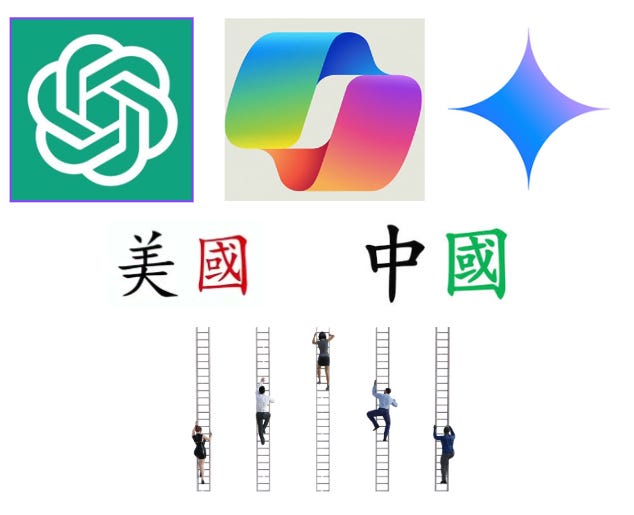Comments on China’s DeepSeek AI Release
...and a postscript on Sino-Western Business Competition
One
DeepSeek appears to present some advances in AI technology that can lead to more widespread adoption of AI technology, especially by smaller companies and organizations. The official narrative is that DeepSeek was developed privately for a fraction of what leading AI products cost to develop in the U.S. That may or may not be true. What is troubling is that Western products like ChatGPT are banned in China, yet Chinese alternatives, like DeepSeek, have unfettered access to the U.S. market. This fact seems to be missing from the plethora of social media reports about DeepSeek.
Two
Social media is full of pundits claiming DeepSeek produces authentic query results (typical Chinese censorship is not present). However, a trusted friend and IT professional downloaded DeepSeek on an extra, dedicated computer (he said he wouldn’t download such an app on a computer for personal use), and he explained that DeepSeek failed to answer basic queries about Tiananmen and that it shut down after repeated attempts to get accurate answers. He added that it appears to be similar to TikTok in its ability to absorb extensive end user data while presenting the opportunity for China to weaponize the app by influencing users at any time.
Three
China’s track record with supposed technological breakthroughs is questionable, take these examples into consideration:
Quantum Supremacy (2020)
China claimed its Jiuzhang quantum computer had achieved "quantum supremacy," surpassing Google's Sycamore quantum computer. However, experts questioned the practical applicability of the test and whether it truly outperformed classical computers in a meaningful way.
Super Rice (2000s-Present)
China has repeatedly announced breakthroughs in "super rice" (high-yield hybrid rice strains) that would revolutionize global food security. While some advances were real, exaggerated claims of extreme yields—far beyond proven scientific results—failed to materialize at scale.
Solar Roadway (2017-2018)
A highway in Jinan was touted as the world’s first "solar expressway," capable of generating electricity from embedded solar panels. However, within months, large sections failed, and some panels were reportedly stolen, casting doubt on the project’s viability.
Hualong One Nuclear Reactor (2021)
China promoted its Hualong One reactor as a cutting-edge, fully domestic innovation. However, analysts pointed out that much of its technology was derived from French and Canadian designs, raising questions about its claimed originality.
Magnetic Levitation (Maglev) Train Speeds (2021-Present)
China claimed its maglev train prototypes could reach speeds of up to 600 km/h. While technically possible, operational versions in real-world conditions have yet to demonstrate such speeds consistently, and many projects have stalled.
Artificial Sun (Nuclear Fusion) (2021)
China announced a record-breaking nuclear fusion experiment with the EAST reactor, claiming to have sustained extreme temperatures for longer than any other project. While impressive, critics noted that it was still far from achieving commercial viability or practical energy production.
COVID-19 Vaccine Efficacy Claims (2020-2021)
Initial claims about the efficacy of Sinovac and Sinopharm vaccines were later revised downward after real-world data showed significantly lower protection rates compared to mRNA vaccines.
Given this track record, Western nations should approach China’s hi-tech announcements with skepticism. While China aggressively promotes its technological achievements, history has shown that many of these claims are exaggerated, unproven, or built on foreign innovations. Beijing’s strategy often prioritizes propaganda value over practical success, using grandiose announcements to project technological dominance. Policymakers, investors, and industry leaders must scrutinize these claims carefully, demanding independent verification before accepting them at face value. In a global competition where technological leadership translates to strategic power, the West cannot afford to be misled by empty promises or unproven breakthroughs.
Postscript:
Since the early 1990s, a small but influential group of red princelings—privileged descendants of China’s Communist elite—have waged political warfare to strengthen China’s position against the West. As WideFountains’ analysis of the Ye-Xi Clique suggests, this strategy emerged amid the Soviet Union’s collapse, the Tiananmen crackdown, and fears of regime instability. Their tactics, once covert, now shape business, technology, media, and education worldwide. Domestically, these extreme measures have entrenched authoritarian rule, weakening China’s economy—an outcome history has repeatedly shown to be inevitable under such regimes. It’s important for Western leaders and citizens alike to recognize these long-term implications.





